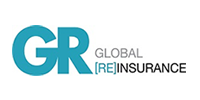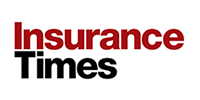Insurers are working at the cutting edge of car technology to help make cars safer and more secure Caroline Jordan reports.
Insurers may be struggling to find ways of coping with spiralling personal injury costs, but when it comes to motor claims, it is not all bad news - there has been a marked reduction in car crime.
Statistics from the Home Office's latest British Crime Survey show that car crime, meaning the attempted theft of and from privately owned vehicles, is down 23% since 1999.
But there is no room for complacency. Car thefts still amounted to nearly 400,000 in 2003, and personal injury claims costs are rising. Furthermore, the sophistication and value of cars continues to rise, with the potential of higher repair costs.
In the light of these pressures, the insurance industry, research organisations and manufacturers are working to improve vehicle security and safety.
Group rating
The Motor Insurance Repair Research Centre, Thatcham, is responsible for the group rating of private cars and light commercial vehicles. Through its research it provides the ABI with 70% of the information used in the group rating of every private motor car registered in the UK.
Thatcham group rating manager Howard Barron says: "Safety and security are advancing considerably. For example, in the old days, it was often necessary to cut out part of the body, but now parts can be bolted on.
This is making repairs easier and so helping insurers with costs." And the compulsory use of immobilisers in new cars has made it much tougher to steal vehicles which reduces claims costs, he adds.
Volkswagen is one manufacturer that is looking to make changes to its designs in order to reduce repair costs. The new Golf, launched in January, has new module doors. In the event of damage, there is no need for the entire door to be replaced. Instead the outer skin panel can easily be detached for repair. This is achieved by the use of load-bearing hybrid bars which serve as the door inner panel. The outer skin panel is bonded to these bars.
Developments in safety and security can make sound business sense. Volvo, for instance, has a name as a safe car and its customers are prepared to pay for this.
Better car design is also set to reduce personal injury claims spend.
Barron says: "Manufactures are working on a range of initiatives to improve head restraints and seat design. Whiplash is a major problem and we can expect to see even safer models on the road soon."
Whiplash claims are a significant problem for insurers. Soft tissue neck injuries currently cost the insurance industry more than £1.6bn a year.
The industry is seeking to address this.
Researchers at Allianz Centre for Technology (AZT) in Munich are working to improve passenger safety and are examining rear-end impacts. They have carried out tests to understand the causes of whiplash and develop preventative counter measures.
As part of the international insurance whiplash prevention group, AZT is also campaigning for manufacturers to implement an international testing standard for head restraints and seats to prevent whiplash.
Tracking devices
But there are still some problem areas. One issue which continues to cause insurers problems is where car keys are stolen from a house. Barron says: "It's hard to determine how widespread this is in relation to car theft, as it is registered by the police as a burglary." He says that the more widespread use of tracking devices is making it easier to recover stolen vehicles, adding that Thatcham will be introducing a new standard for trackers shortly.
Car-jacking, where victims are forced from their vehicles, is also a growing problem for insurers. Motoring organisation RAC says that this is because it is now far harder to steal a car in the conventional manner.
The use of laminated glass windows inside vehicles has the potential to reduce the cost of claims from car-jacking and vehicle break-in. Laminated glass, which can be used in film form and attached to the inside of a window, is more difficult to break than untreated glass. Typically the installation cost is only about £400.
Norwich Union's claims technical manager Phil Gledhill says: "Laminated glass gives real protection if someone tries to put a brick or sledgehammer through the glass. Insurers are likely to offer discounts where this is fitted." Longer term, Gledhill says he is confident that safety and security will continue to improve. "Cars are being made with safer and stronger materials such as high-strength steel."
One issue for the insurance industry is that vehicles are becoming more expensive. Air conditioning systems, in-car entertainment systems and lighter construction material all impact on the total cost of a vehicle.
More complicated
Allianz Cornhill motor damage claims manager Dane Loosely says: "With a highly developed equipment level, the repair of modern vehicles has become more complicated. Extra stress is placed on both mechanics and materials, increasing the time needed for repair measures. Repair costs are growing accordingly.
"This cost spiral can only be interrupted by the search for new and more cost-efficient repair methods and by taking the repair aspect into consideration when a vehicle is still in its design stage."
AZT conducts research into more cost effective repairs, to ensure that future repairs are taken into account in the design of new cars.
Loosely says that AZT's research is successfully reducing the cost of repairing vehicles. "Repair costs in the areas of bodywork, paint, mechanics or electronics can be reduced by up to 80% as a result of the specific application of new repair methods."
How technology is protecting vehicles
Brokers are seeing the benefits of offering clients vehicle protection cover. Last month Heath Lambert launched i-nsure, which it claims is the first initiative to combine vehicle security technology with insurance.
The technology is provided by i-mob, which monitors the vehicle and alerts the owner if it is either stolen, driven away following key theft, or involved in a serious accident. Heath Lambert is providing an information and quotation facility for i-nsure via the i-mob Insurance Services call centre.
Heath Lambert director Julian Wakeling says: "Most cars will have a security system, but this is far more advanced and includes a panic button which can be used if there is an attack. We are able to offer customers discounts on cover if they install the system." Insurers such as Groupama, Chubb and Link have signed up to this, he says.
Security winner
The insurance industry-backed Motor Insurance Repair Research Centre Thatcham, recently held the first British Insurance Car Security Awards, with gongs presented by Home Office minister Hazel Blears. She said the government was on target to fulfil its pledge to cut car crime by 30%.
Audi won the top prize for its A8 and A3 ranges.
The A8 range can lay claim to the title of Britain's most secure car with a range of devices including Thatcham category one alarm and immobiliser technology. Also, it is the only model range to feature laminated side glass for maximum break-in protection as standard. This feature secured best in class in the small family car category.










































